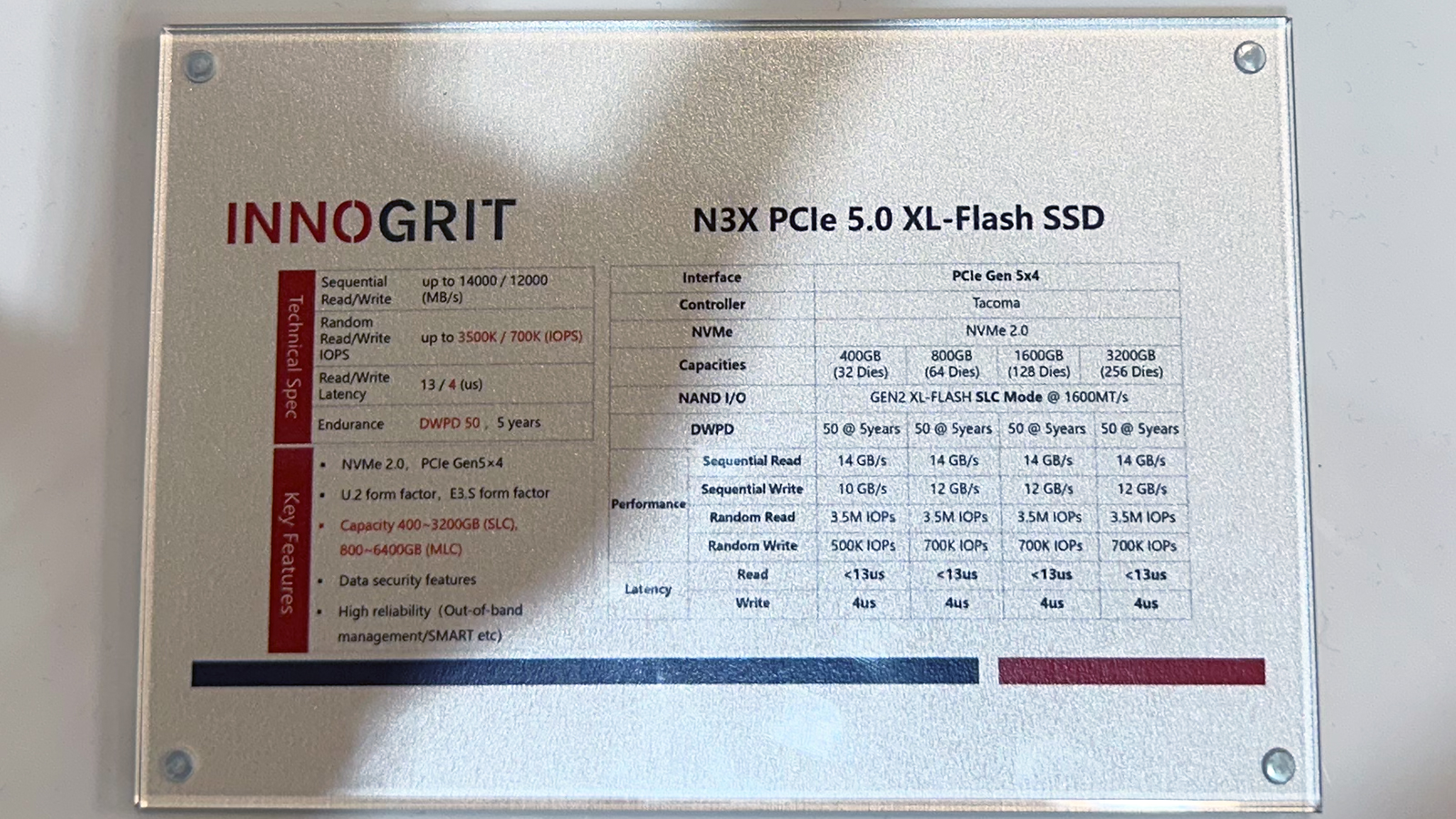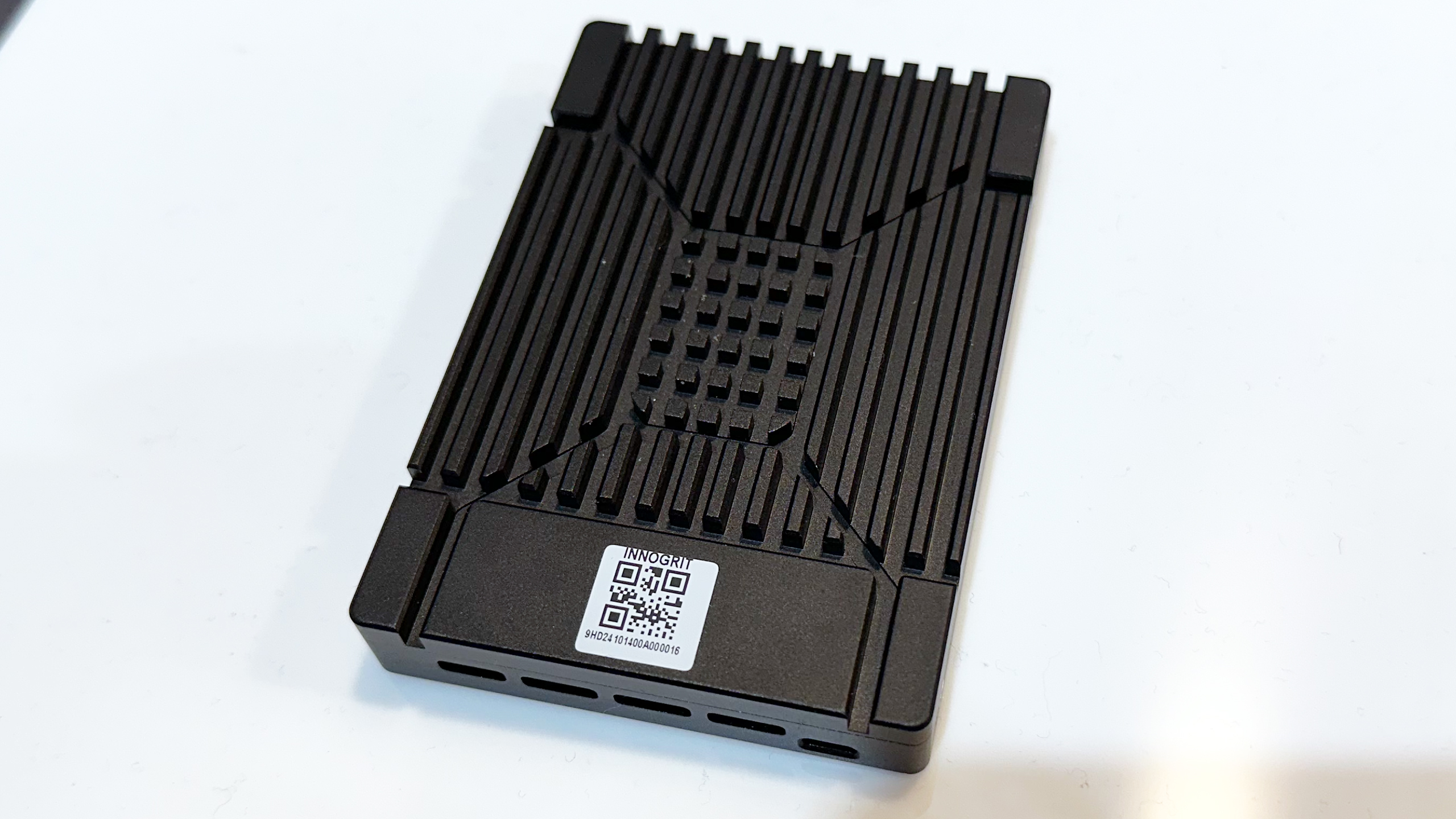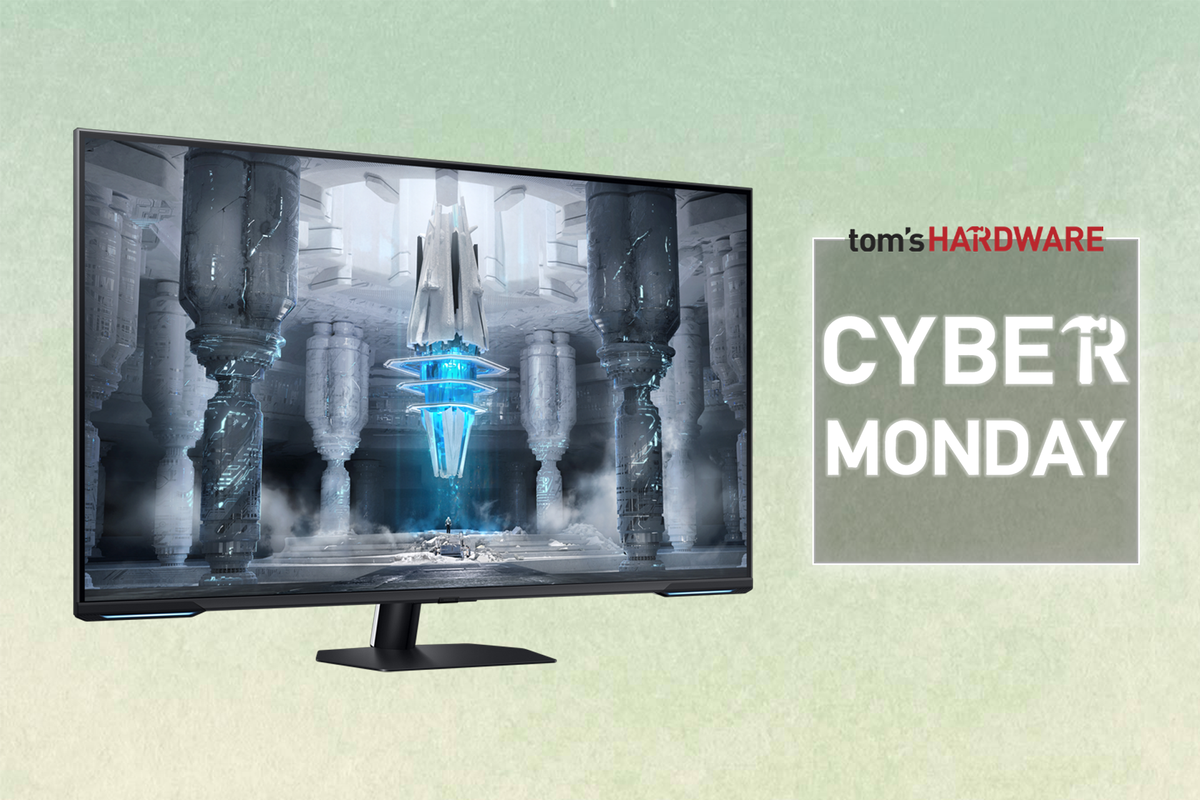Kioxia has introduced two generations of its XL-Flash storage class memory (SCM), a high-speed type of NAND memory originally designed to compete with Optane SSD technology by providing new levels of latency, performance, and endurance over standard flash-based storage. However, so far, only a few companies have released solid-state drives based on this type of NAND. This might change, as InnoGrit, a maker of SSD controllers, demonstrated a reference design PCIe 5.0 SSD based on XL-Flash memory at Computex that delivers up to an incredible 3.5 million random read IOPS. Therefore, there is a chance that independent makers of solid-state drives will release drives based on Kioxia's SCM.
InnoGrit's N3X SSD, based on the InnoGrit Tacoma IG5669 controller and Kioxia's 2nd Generation XL-Flash memory in SLC mode, is designed for latency-sensitive enterprise workloads that demand the utmost reliability. The NVMe 2.0-compliant controller supports a PCIe 5.0 x4 interface and enables sustained performance of up to 14 GB/s sequential read speed and up to 12 GB/s sequential write speed, as well as up to 3.5 million random read IOPS and 700 thousand random write IOPS.
Perhaps more importantly, there's less than 13 microseconds of read latency, a huge reduction compared to the ~50 – 100 µs for 3D TLC NAND, and 4 µs write latency, another massive decrease compared to ~200 – 400 µs for 3D TLC NAND, which is particularly useful for caching, AI inference, in-memory computing, and real-time analytics.

These N3X SSDs offer capacities from 400GB to 3.2TB using 2nd Gen XL-Flash in SLC mode (with configurations spanning from 32 to 256 NAND dies), making these SSDs a compelling alternative to discontinued Intel Optane solutions.
The endurance rating of the drive is particularly impressive: 50 DWPD over 5 years, far exceeding the standard enterprise NAND-based SSD endurance levels, which makes it ideal for write-intensive tasks such as caching, inference, and transactional workloads where longevity and consistent performance are critical.
InnoGrit envisions that its partners might build XL-Flash and IG5669-based SSDs in U.2 or E3.S form factors. Yet, they could also build drives in an add-on card form factor to cater to the needs of desktop workstations or even high-end desktops.
Kioxia's XL-Flash is a high-performance NAND technology designed to bridge the latency gap between DRAM and conventional flash memory, making it a viable SCM option for enterprise applications that require persistent memory with DRAM-like responsiveness. Kioxia's 2nd Generation XL-Flash doubles density by using an MLC (multi-level cell) architecture, raising die capacity from 128Gb to 256Gb. However, InnoGrit believes that it makes sense to use such memory in SLC configuration for higher performance, as at the end of the day, this is what users of XL-Flash demand the most.
Originally, Kioxia positioned XL-Flash as a competitor to Intel's discontinued Optane memory; however, for now, we can say that XL-Flash is taking over where Optane left off.
Kioxia has been the main supplier of XL-Flash-based solid-state drives, though we have seen SSDs featuring this type of SCM from companies like Memblaze, albeit based on the very expensive Microsemi Flashtec NVMe2016 controller. InnoGrit is a more democratic maker of SSD controllers, so one can expect N3X SSDs to become more widespread, assuming that drive manufacturers adopt this design. Keep in mind, however, that XL-Flash is a niche type of memory, so it is unlikely to become truly widespread.
Follow Tom's Hardware on Google News to get our up-to-date news, analysis, and reviews in your feeds. Make sure to click the Follow button.

 6 months ago
96
6 months ago
96








 English (US) ·
English (US) ·